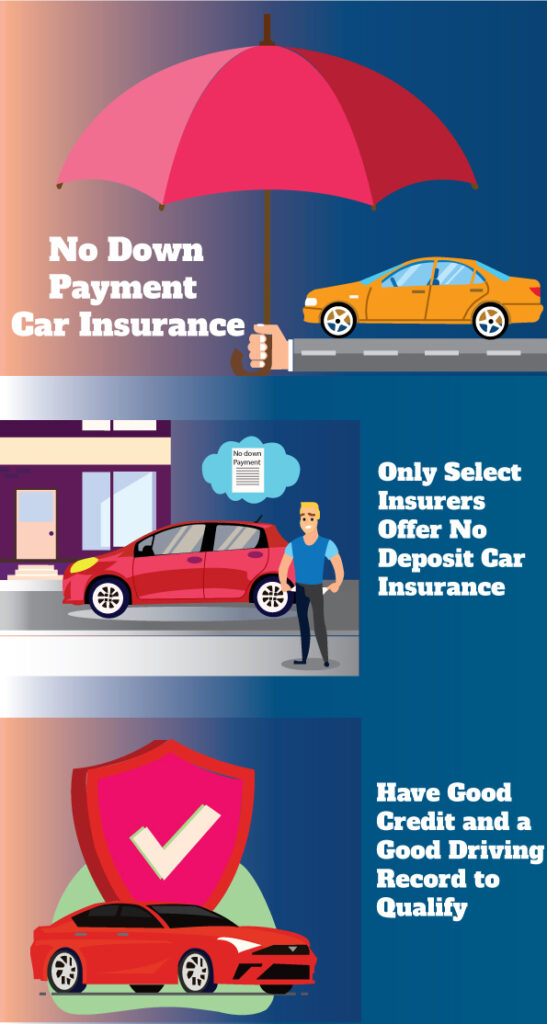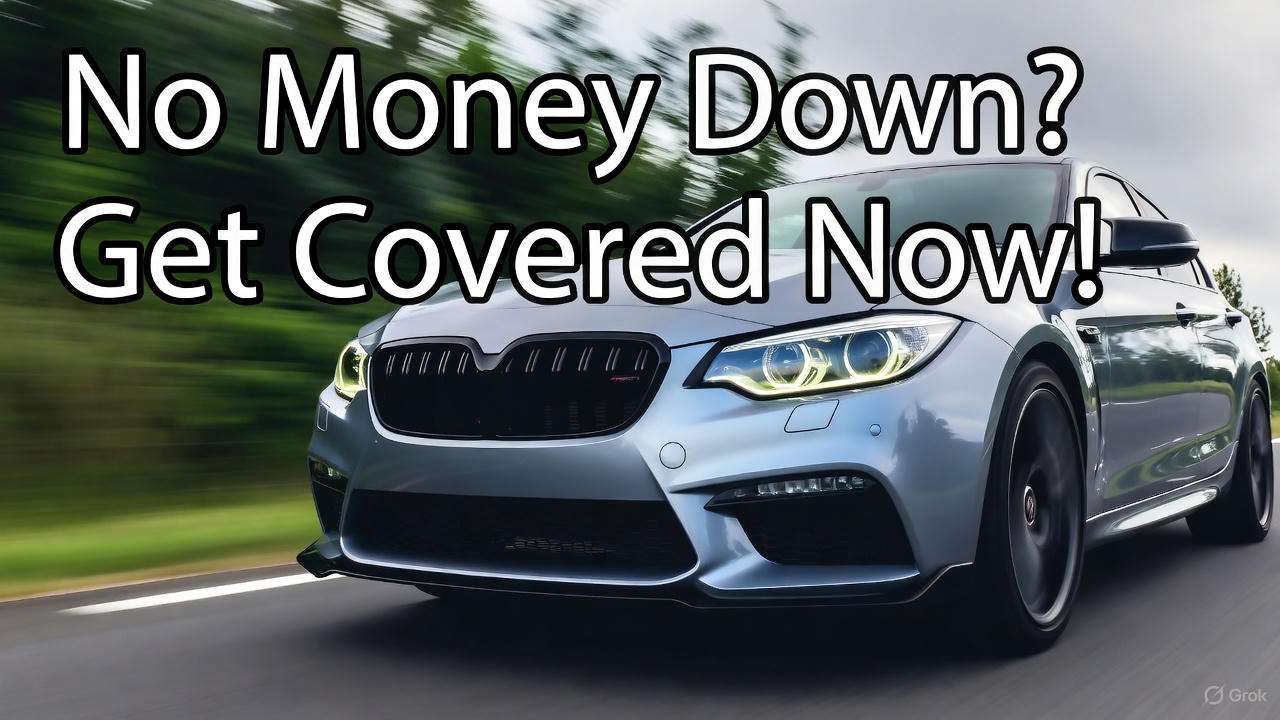By Matthew Kayser Contributor October 21, 2025
Imagine this: You’re cruising down the highway, radio blasting, when a rogue pothole sends your tire into a spin. Heart pounding, you pull over—only to realize your insurance lapsed last month because that surprise vet bill ate your emergency fund. Sound familiar? For millions of Americans juggling skyrocketing bills, it’s not just a nightmare; it’s reality. Enter “no money down” car insurance: the game-changing option that’s exploding in popularity, letting drivers hit the road covered now and pay later. Searches for this lifeline have skyrocketed this year, turning a simple policy tweak into a financial savior for cash-strapped families.
This isn’t some gimmicky shortcut—it’s a smart shift in how we think about protection on wheels. Qualified drivers skip the hefty upfront deposit (often $200–$500) and start coverage immediately, with the first premium deferred for up to 30 days. It’s like hitting pause on your wallet while keeping the green light on safety. But as with any fast lane, there are bumps ahead. Let’s dive under the hood.
A Lifeline in a Squeeze: Why It’s Booming Now
Picture your monthly budget as a Jenga tower: one wrong pull, and it all comes crashing down. With inflation gnawing at paychecks, interest rates climbing like a bad sequel, and new cars costing a cool $48,000 on average, who has spare cash for insurance deposits? Federal Reserve data paints a stark picture—over 37% of U.S. adults couldn’t cover a $400 emergency without borrowing or selling something precious. That’s not pocket change; that’s the exact ballpark of a standard auto policy down payment.
Insurers aren’t blind to the chaos. Forward-thinking carriers like those at MoneyMow are rolling out deferred-payment plans tailored for everyday heroes: the single parent dodging daycare hikes or the gig worker whose last fare vanished on gas. It’s not about slashing prices—it’s about timing. This flexibility prevents lapses that could lead to $500 fines, license suspensions, or worse: driving exposed in a world of reckless tails and texting teens.
The Mechanics: How Deferred Payments Actually Roll
Forget the old-school ritual of forking over a fat check at the dealership or agent’s office. In a no-deposit world, it’s all digital dazzle. You upload your license, VIN, and proof of address via app—boom, verified in under five minutes. Coverage kicks in instantly, with a sleek PDF proof-of-insurance beaming to your phone. Your first bill? It chills until payday, typically 30 days out.
The catch? Premiums might nudge up 5–10% monthly to cover the insurer’s brief risk window. But for many, that’s a small price for peace of mind. “It’s like renting-to-own your safety net,” explains industry analyst Sarah Williams. “You get the full ride upfront, and the installments feel like sips from a straw instead of gulping from the firehose.”
This model thrives on trust—your payment history and clean record are the keys to entry. It’s democratizing coverage, pulling in the 13% of U.S. drivers who skip insurance altogether due to cost barriers, per the Insurance Information Institute.
Gatekeepers: Who Gets the Green Light?
Not everyone’s invited to this no-upfront party. Insurers play it safe with strict underwriting: spotless driving records, reliable payment patterns, and often a soft credit peek. Got a DUI in the rearview or a string of late bills? You’ll likely pony up that deposit or shop elsewhere.
But for the qualified—think steady commuters with no tickets—it’s a breeze. Online disruptors lead the charge, using AI algorithms to greenlight policies faster than you can say “claim denied.” States like Texas and Florida, where uninsured rates hover at 15%, are hotspots, as regulators cheer anything that pads coverage rolls and trims public accident costs by millions annually.
Red Flags on the Dashboard: The Hidden Hazards
Flashy as it sounds, “no money down” isn’t foolproof. Start strong, but miss that deferred payment? Your policy could vanish—poof—sometimes backdated to day one, leaving you retroactively naked for any fender-benders. Add $25–$50 admin fees, and suddenly that breathing room feels like a breath held too long.
Williams warns: “The grace period is golden, but one oversight can ding your record like a hailstorm on a new paint job.” Set calendar alerts, link autopay, and treat it like a hot coffee—handle with care. Long-term? It’s a bridge, not a bypass; switch to traditional plans once your finances firm up to dodge those premium hikes.

Timing Is Everything: Bridging the Cash Crunch
Why does this matter so much? Because lapses aren’t laziness—they’re life. A popped appendix, a leaky roof, or that “check engine” light at midnight can torpedo your bank account right when renewal hits. No-deposit flips the script: Coverage first, cash catch-up second. Insurers win with fewer gaps (and steadier revenue streams), while you dodge the $1,000+ average uninsured crash payout.
“It’s empathy in action,” Williams notes. “Not a handout, but a hand up—keeping families legal, safe, and rolling without the panic.”
Mapping the Movement: Where It’s Accelerating
Zoom out, and you’ll see this trend turbocharging in affordability-challenged zones: the Sun Belt’s sprawling suburbs, Rust Belt renters, and Western boomtowns. Digital natives dominate, with apps turning policy hunts into swipe-right simplicity. Expect more pilots nationwide as data proves the model curbs cancellations by 20–30%, per early carrier reports.
It’s echoing the buy-now-pay-later boom in retail—think Affirm for your Accord. Regulators nod approval, seeing safer roads and fewer ER visits from at-fault wrecks.
Voices from the Front Lines: Proceed with Eyes Wide Open
Advocates applaud the accessibility but preach clarity. Always eyeball the total annual cost, not just the teaser “zero down.” Align that due date with your direct deposit, and read the fine print on cancellation quirks.
“‘No money down’ dazzles like neon, but it’s a timing tool, not a treasure chest,” Williams cautions. “Grasp that, and it empowers; ignore it, and it bites.” Pro tip: Once stable, reassess—traditional setups often trim costs over time.
The Big Picture: Flexibility as the New Normal
Car insurance moves at glacial speed, but this deferred dash signals seismic shifts across finance. From Spotify skips to gym memberships, we’re all about access now, settle later. For carriers, it’s customer loyalty gold; for you, it’s armor against the unpredictable.
In the end, Williams sums it up: “If tweaking the payment clock keeps one more driver insured and incident-free, it’s not just smart—it’s essential. Buckle up; the future of coverage is shifting gears.”
This article is for informational purposes only and not financial advice. Consult a professional for personalized guidance. We assume no liability for decisions based on this content.










